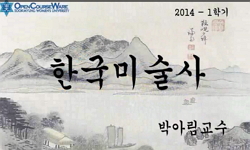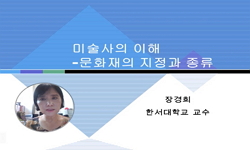일본에서 1945년 이후 생산된 미술은 긴 시간 미술사보다는 미술비평에서 논의되어 왔다. 마치 영토를 나누듯 미술사와 미술비평이 1945년을 경계로 연구의 영역을 분담했다. 따라서 1945년 이...
http://chineseinput.net/에서 pinyin(병음)방식으로 중국어를 변환할 수 있습니다.
변환된 중국어를 복사하여 사용하시면 됩니다.
- 中文 을 입력하시려면 zhongwen을 입력하시고 space를누르시면됩니다.
- 北京 을 입력하시려면 beijing을 입력하시고 space를 누르시면 됩니다.

일본현대미술을 논하는 두 가지 길: 일본의 현대미술 혹은 현대일본의 미술 = Two Approaches to Discussing Japanese Contemporary Art : Japan’s Contemporary Art or the Art of Contemporary Japan
한글로보기부가정보
국문 초록 (Abstract)
일본에서 1945년 이후 생산된 미술은 긴 시간 미술사보다는 미술비평에서 논의되어 왔다. 마치 영토를 나누듯 미술사와 미술비평이 1945년을 경계로 연구의 영역을 분담했다. 따라서 1945년 이후의 일본미술이 어떻게 역사화되는가를 이해하는 데에 비평가들의 글과 책이 중요한 텍스트가 된다. 실제로 비평가들은 개별 작가나 전시에 대한 평론 외에도 전후일본에 있어서 미술이 무엇인가를 묻거나, 전후미술의 사적 전개에 주목하는 등 전후미술 혹은 미술비평을 사후적으로 조망하는 저술 작업도 해왔다. 본 논문에서는 1986년 출판된 지바 시게오(千葉成夫)의 『현대미술일탈사: 1945~1985』 와 1998년 출판된 사와라기 노이(椹木野衣)의 『일본·현대·미술』의 검토를 통해 일본현대미술을 논하는 두 가지 접근을 비교하고자 한다. 두 책은 전후 미술비평서 가운데에서도 일본현대미술의 상을 만들어 내는 데에 중요한 역할을 한 저작으로 꼽힌다. 두 책 모두 미술의 전 장르를 고루고루 시대적 변천에 따라 추적하는 기술 방식을 취하지는 않는다. 구색 맞추기 하지 않고 편파적으로 서술한 덕분에 일본현대미술을 어떻게 정의하고 가치 매기고 있는지가 선명하게 드러난다. 12년의 시차를 두고 등장한 지바와 사와라기의 일본현대미술론은 후자가 전자를 “뒤집어 읽기” 위한 시도로 이해되기도 할 만큼 긴장 관계에 서 있다. 전자가 미술의 내적 논리에 초점을 두고 일본에서의 ‘현대미술’의 역사적 전개를 구조화한다면, 후자는 ‘현대일본’에 대한 비판적 성찰을 토대로 이곳에서 ‘미술’의 역사적 전개가 불가능함을 주장한다. 두 저자의 세대와 배경만큼이나 각 저서가 쓰인 시점의 차이도 둘의 일본현대미술론을 비교하는 데 중요하게 고려되어야 한다. “역사화는 역사화되는 측의 시대이념이 아니라 역사화하는 시대의 이념을 축으로 이루어진다”는 사토 도신의 지적처럼, 지바와 사와라기의 일본현대미술에 대한 인식의 차이는 1980년대 중반 일본과 1990년대 후반 일본의 시대 상황의 차이와 무관하지 않다. 본 논문은 일본 현대사의 맥락으로부터 두 비평가의 일본현대미술론을 읽어내려는 시도이다.
다국어 초록 (Multilingual Abstract)
In Japan, art since 1945 has long been a subject deliberated in the realm of art criticism rather than within the domain of art history. As if demarcating territories, art history and art criticism have divided their research areas along the boundary ...
In Japan, art since 1945 has long been a subject deliberated in the realm of art criticism rather than within the domain of art history. As if demarcating territories, art history and art criticism have divided their research areas along the boundary of 1945. Consequently, articles and books authored by art critics become crucial for understanding how Japanese art after 1945 has been historicized. Beyond reviewing individual artists and exhibitions, these critics have delved into comprehensive retrospectives, probing the essence of postwar art in Japan and charting its historical trajectory. This essay undertakes a comparative analysis of two distinct approaches to the discussion of Japanese contemporary art, spotlighting Chiba Shigeo’s Gendai Bijutsu Itsudatsushi, 1945-1985(The Deviant History of Contemporary Art, 1945-1985), published in 1986, and Sawaragi Noi’s Nihon·Gendai·Bijutsu (Japan·Contemporary·Art), released in 1998. Both volumes stand as seminal contributions to postwar art criticism, wielding significant influence in shaping the perception of Japanese contemporary art. Notably, neither work adheres to the conventional historical methodology of uniformly tracing all genres of art over time. Instead, their biased narratives explicitly reveal how they define and evaluate Japanese contemporary art. Written twelve years apart, Chiba’s and Sawaragi’s theories on Japanese contemporary art exist in a tension, with the latter seemingly endeavoring to “read backward” the former. Chiba delineates the historical development of “contemporary art” in Japan by focusing on the internal logic of art, while Sawaragi argues against the possibility of a historical progression of “art” within “contemporary Japan” through his critical analysis of its contradictions. The temporal divergence between the two books, along with the difference in generation and background between the authors, necessitates thoughtful consideration in the comparative analysis of their perspectives on Japanese contemporary art. As Satō Dōshin astutely observes, “historicization is not anchored in the ideology of the era being historicized but rather in the ideology of the period in which the historicization occurs.” The variance in Chiba’s and Sawaragi’s perceptions of Japanese contemporary art resonates with the temporal shift from mid-1980s Japan to late 1990s Japan. This paper endeavors to interpret the theories of these two critics within the contextual framework of contemporary Japanese history.
동일학술지(권/호) 다른 논문
-
메이지 시대의 요괴 및 유령 이미지와 신경병과의 관계 고찰
- 한국근현대미술사학회(구 한국근대미술사학회)
- 정상연
- 2023
- KCI등재
-
더 넓은 ‘우리’의 미술사를 향해서 - 백름, 『재일조선인미술사 1945-1962 : 미술가들과 표현 활동의 기록』(연립서가, 2023)
- 한국근현대미술사학회(구 한국근대미술사학회)
- 목수현
- 2023
- KCI등재
-
1980년대 소그룹 난지도와 메타복스의 설치미술: 표현매체로서의 물성, 그리고 현실과 전통
- 한국근현대미술사학회(구 한국근대미술사학회)
- 이윤수
- 2023
- KCI등재
-
조각의 근대성과 현대성: 한국근현대조각사 서술의 쟁점들
- 한국근현대미술사학회(구 한국근대미술사학회)
- 홍지석
- 2023
- KCI등재




 DBpia
DBpia






